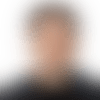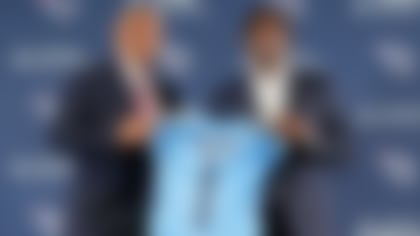The great former Houston Oilers coach Bum Phillips once gave his adversary Don Shula the ultimate coaching compliment:
"He can take his'n and beat your'n and take your'n and beat his'n," Phillips said.
He may as well be describing Bill Belichick. As the Patriots coach prepares for a potential fifth Super Bowl title with New England -- and the unquestioned title as the best coach of the Super Bowl era -- Belichick's ability to "take your'n" looms larger than ever.
The Patriots acquired five players since the end of last season via trade, more than any other NFL team. Guard Jonathan Cooper, part of the Chandler Jones trade with Arizona, was released in October, but three of those players -- tight end Martellus Bennett, cornerback Eric Rowe and underrated linebacker Kyle Van Noy -- played key roles in Belichick's seventh AFC championship. This isn't a new trend: He acquired four players via trade during the team's 2014 title run, too.
Belichick's unique role as coach and head personnel evaluator sets him apart as a team builder. Not every deal works out, but Belichick has the flexibility to take low-cost, high-reward chances because he's confident he can coach up a player's best attributes. Over the last year, Belichick addressed clear weaknesses on his roster without giving up much.
Rowe was acquired for only a conditional fourth-round pick, giving the Patriots a much-needed cornerback who could take snaps on the outside. Van Noy and Bennett cost even less, with New England simply moving down in Day 3 of the draft in order to snag those two from Detroit and Chicago, respectively.
The acquisition of Van Noy came five days before the Patriots shocked the NFL world in October by dealing away star linebacker Jamie Collins to the Cleveland Browns. The Collins trade was difficult to understand at the time, but Belichick reportedly felt with conviction that dumping Collins was addition by subtraction.
In a league where teams bend over backward to retain talented players, Belichick decided that Collins wasn't worth keeping around. This wasn't just about getting a draft pick for Collins before he left via free agency. This was about preserving Belichick's team-first approach at a time when Collins' effort and propensity for freelancing was questioned. With Collins seeking a new contract, Belichick eliminated any distraction before it happened from his team's ultimate goal. Asked if he was hurt by the trade, Collins was pointed.
"No. That shows their character," Collins told reporters.
That likely was intended as a shot, but he's not wrong. No other coach would replace a Pro Bowler with an afterthought in the middle of a potential championship season. No other coach would trust his instincts like that or trust that he could replace Collins' production. The Patriots value their system over any individual player, as long as that player isn't Tom Brady. This overarching conviction is how the Patriots can survive Rob Gronkowski's injury or turn over nearly half their championship starting lineup from two seasons ago and make it back to the Super Bowl. Here's a look at how Belichick built his latest AFC championship roster:
» Patriots fans know to be careful with their jersey purchases. The last time I examined New England's roster construction before a Super Bowl -- just two years ago -- one focus was Belichick's hot streak with early defensive draft picks. In the meantime, he dealt away star defensive end Chandler Jones to Arizona, cut first-round pick Dominique Easley and traded Collins. They have been replaced by a group that lacks star power but is greater than the sum of its parts.
» Bargain-bin free agents have been a staple for Belichick's Super Bowl teams dating back to 2001. LeGarrette Blount and Dion Lewis, the team's dynamic backfield duo, combine to make just over $2 million this season. Blount led the league in touchdowns. Defensive tackle Alan Branch is playing at a Pro Bowl level at a cap number under $3 million. Chris Long and Shea McClellin play a lot of snaps for a low price.
» Despite all the roster churning, New England has enjoyed enviable continuity at the tackle position. Nate Solder and Marcus Cannon both arrived in 2011 and wound up earning big contract extensions. (Cannon is on his third.) They are two of eight active Patriots remaining from New England's last Super Bowl loss to the New York Giants. That was supposed to be Tom Brady's last, best chance at a title with his expected decline right around the corner. We were so naive.
» New England is more likely to pay another team's free agent a mid-level contract than hand out a monster deal to someone like Collins. The key is keeping the deals short. Tight end Michael Bennett, wide receiver Chris Hogan and defensive end Jabaal Sheard have three of the highest seven cap figures on the team. Bennett arrived via trade on the last year of his deal, while Hogan and Sheard were given short-term free agent contracts that maximize their prime.
Instead of fearing turnover, Belichick embraces it. The Patriots have up to eight unrestricted free agents who played starter-level snaps this season. Super Bowl LI likely will be the final game for many key Patriots, and the 2017 team will look quite different than this squad. The only constants in New England are Belichick, Brady and change.












